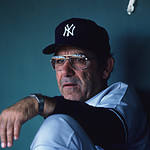The Mendoza Line is a term used in baseball to refer to a player’s batting average. Specifically, it is used to describe a player who has a batting average of .200 or lower. The term was coined after Mario Mendoza, a former Major League Baseball player who struggled with hitting throughout his career.
While a batting average of .200 may not seem particularly low, it is considered a benchmark for poor performance in baseball. Players who fall below the Mendoza Line are often considered liabilities to their team and may be at risk of losing their spot on the roster. Despite this, some players have managed to have successful careers despite batting below .200 for a portion of their time in the league.
Overall, the Mendoza Line is a key metric used in baseball to evaluate a player’s hitting ability. While it may not be the only factor considered, it is an important one that can have a significant impact on a player’s career.
What is the Mendoza Line?
In baseball, the Mendoza Line is a term used to describe a batting average of .200. The term was coined after Mario Mendoza, a former Major League Baseball player who had a career batting average of .215.
A player who consistently bats below the Mendoza Line is considered to be a poor hitter, while a player who consistently bats above it is considered to be a decent or good hitter. However, it is important to note that batting average alone does not necessarily reflect a player’s overall offensive ability.
Despite its negative connotation, the Mendoza Line has become a popular and widely recognized term in baseball culture. It is often used by fans, commentators, and analysts to evaluate a player’s hitting performance.
In recent years, some have argued that the Mendoza Line is an outdated statistic and that other metrics, such as on-base percentage and slugging percentage, provide a more complete picture of a player’s offensive production. Nonetheless, it remains part of baseball lore and continues to be used as a shorthand for a player’s hitting struggles.
History of the Mendoza Line
Mario Mendoza
The term “Mendoza Line” was coined in honor of Mario Mendoza, a former Major League Baseball (MLB) shortstop who played for the Pittsburgh Pirates, Seattle Mariners, and Texas Rangers. Mendoza was known for his defensive skills, but he struggled at the plate, with a career batting average of .215. In 1979, Mendoza hit .198, which led to a comment by his teammate, George Brett, that a player who hits below .200 should be called the “Mendoza Line.”
George Brett
George Brett, a Hall of Fame third baseman for the Kansas City Royals, popularized the term “Mendoza Line” when he used it in an interview with a reporter from the Sunday paper in 1980. Brett was discussing the struggles of his teammate, U.L. Washington, at the plate, and he said that Washington was “below the Mendoza Line.” The term caught on with fans and the media, and it has been used ever since to describe a batting average of around .200.

It has become a benchmark for hitters in MLB, with a batting average below .200 considered unacceptable for most players. However, some players have managed to have successful careers despite hitting below the Mendoza Line, such as Ozzie Smith, who hit .189 in 1981 but was still a valuable player for the St. Louis Cardinals due to his defensive skills.
OPS, or on-base plus slugging percentage, is a more comprehensive statistic that takes into account a player’s ability to get on base and hit for power. A player with an OPS above .800 is considered above average, while a player with an OPS below .700 is considered below average. The line is roughly equivalent to an OPS of .500.
In conclusion, the Mendoza Line is a term that has become synonymous with a batting average of around .200 in MLB. It was named after Mario Mendoza, a former shortstop who struggled at the plate but was known for his defensive skills. While the linehas become a benchmark for hitters, other statistics such as OPS provide a more comprehensive view of a player’s offensive abilities.
Impact of the Mendoza Line
Offensive Futility
The Mendoza Line, named after Mario Mendoza, a former Major League Baseball player, refers to a batting average of .200. Any player who has a batting average below .200 is said to be hitting below the Mendoza Line. It is commonly used to describe players who are struggling offensively and are not contributing to their team’s success.
A player hitting below the Mendoza Line is considered a liability for their team’s offense. It means that they are not getting enough hits to put themselves in scoring positions or drive in runs. This can be especially detrimental to a team in close games or in situations where they need to score runs quickly.
Position Players vs Pitchers
The Mendoza Line is often used to compare the offensive production of position players and pitchers. Pitchers are not expected to be great hitters, so any pitcher hitting above the Mendoza Line is considered a bonus. On the other hand, position players hitting below the Mendoza Line are expected to improve their offensive performance.
Fielding and Defense
While the Mendoza Line is primarily used to measure offensive performance, it can also have an impact on a player’s fielding and defense. Players who are struggling offensively may become frustrated and lose focus on the defensive side of the ball. This can lead to errors and mistakes that can cost their team runs.
In conclusion, hitting below the Mendoza Line is a sign of offensive futility and can have a negative impact on a player’s performance and their team’s success. It is important for players to work on their offensive skills and improve their hitting to avoid hitting below the Mendoza Line.
Notable Players and Teams Associated with the Mendoza Line
Seattle Mariners
The Seattle Mariners have had their fair share of players who have struggled to hit above the Mendoza Line. One of the most notable players is Tom Paciorek, who played for the Mariners from 1978 to 1981. In 1980, Paciorek had a batting average of .193, which was well below the Mendoza Line. Another player who struggled to hit was Bruce Bochte, who had a batting average of .209 in 1983.
Kansas City Royals
The Kansas City Royals have also had some players who have struggled to hit above the Mendoza Line. One of the most famous players associated with it is Mario Mendoza himself, who played for the Royals from 1979 to 1980. Mendoza was known for his excellent defensive skills, but he struggled at the plate, with a career batting average of .215. He was nicknamed “Silk Hands” for his defensive prowess.
Pittsburgh Pirates
The Pittsburgh Pirates have had their fair share of players who have struggled to hit above the Mendoza Line. One of the most notable players is Jose Castillo, who played for the Pirates from 2004 to 2007. In 2006, Castillo had a batting average of .244, which was well below the Mendoza Line. Another player who struggled to hit was Pedro Alvarez, who had a batting average of .191 in 2014.
Texas Rangers
The Texas Rangers have also had some players who have struggled to hit above the Mendoza Line. One of the most famous players associated with it is Benji Gil, who played for the Rangers from 1993 to 2002. Gil was known for his excellent defensive skills, but he struggled at the plate, with a career batting average of .237.
Overall, the Mendoza Line has been a source of frustration for players and teams alike. While some players have been able to overcome it, others have struggled to hit consistently above it. Regardless, the Mendoza Line remains part of baseball lore and continues to be a benchmark for hitting futility.
Legacy of the Mendoza Line
Baseball Hall of Fame
Over time it became a term synonymous with hitting futility in baseball. It is named after Mario Mendoza, a shortstop who played for the Pittsburgh Pirates, Seattle Mariners, and Texas Rangers from 1974 to 1982. Mendoza was known for his defensive prowess but struggled at the plate, hitting only .215 for his career.
Despite his offensive struggles, Mendoza’s name lives on in baseball lore. In 2002, he was inducted into the Mexican Professional Baseball Hall of Fame. However, he has not been enshrined in the Baseball Hall of Fame in Cooperstown, New York.

Mexican Professional Baseball Hall of Fame
Mendoza’s induction into the Mexican Professional Baseball Hall of Fame was a testament to his contributions to the sport in Mexico, where he played for several seasons. His legacy in Mexican baseball is still celebrated today, and he is remembered as one of the country’s greatest players.
While Mendoza may not have achieved the same level of success in the Major Leagues, his name has become synonymous with hitting struggles. The term is used to describe a batting average of .200, a benchmark that many players strive to avoid falling below.
In recent years, the Mendoza Line has been criticized as an outdated metric for evaluating hitting performance. Advanced statistics such as Wins Above Replacement (WAR) have become more popular among baseball analysts and scouts. However, the term remains part of the baseball lexicon and is still used by commentators such as Chris Berman on ESPN broadcasts.
Overall, the legacy of the Mendoza Line is one of both humor and respect. While Mario Mendoza may not be remembered as a great hitter, his name has become a fixture in baseball culture and a symbol of the challenges that players face at the plate.
| Mendoza inducted into the Hall of fame | Relevance |
|---|---|
| Hall of Fame | A commentator who popularized the term on ESPN |
| MLB | Mendoza played for Pittsburgh Pirates, Seattle Mariners, and Texas Rangers |
| ESPN | Chris Berman uses the term on ESPN broadcasts |
| Chris Berman | Advanced statistics used to evaluate player performance |
| WAR | Advanced statistic used to evaluate player performance |
| Mexican Baseball Hall of Fame | Mendoza is known for his defensive prowess |
| Roster | Mendoza’s career stats included a .215 batting average |
| Scout | Mendoza inducted into the Mexican Professional Baseball Hall of Fame |
| Major Leagues | Mendoza played in the Major Leagues for several seasons |
- Fenway Park Seating Chart: Best Seats To See the Red Sox - July 17, 2023
- What is RBI in Baseball: A Simple Explanation of The “Ribby” - July 3, 2023
- What is DFA in Baseball? A Term No Player Wants to Hear - July 3, 2023








